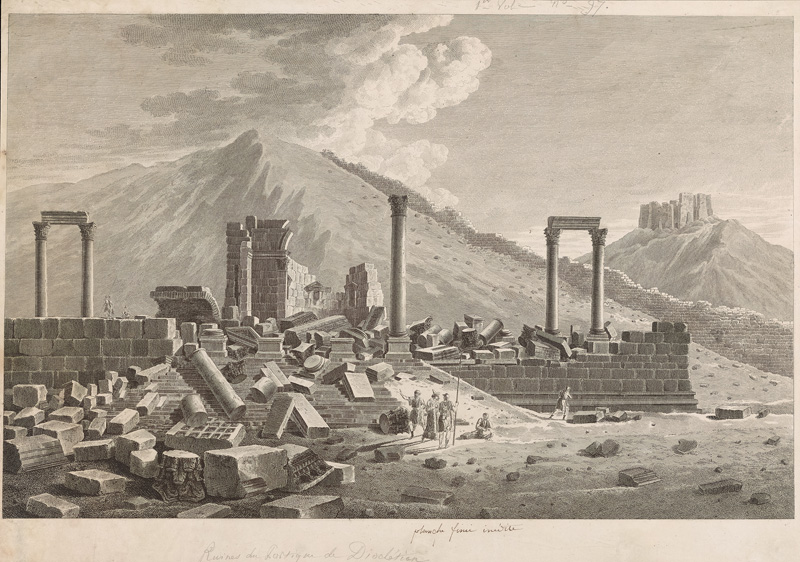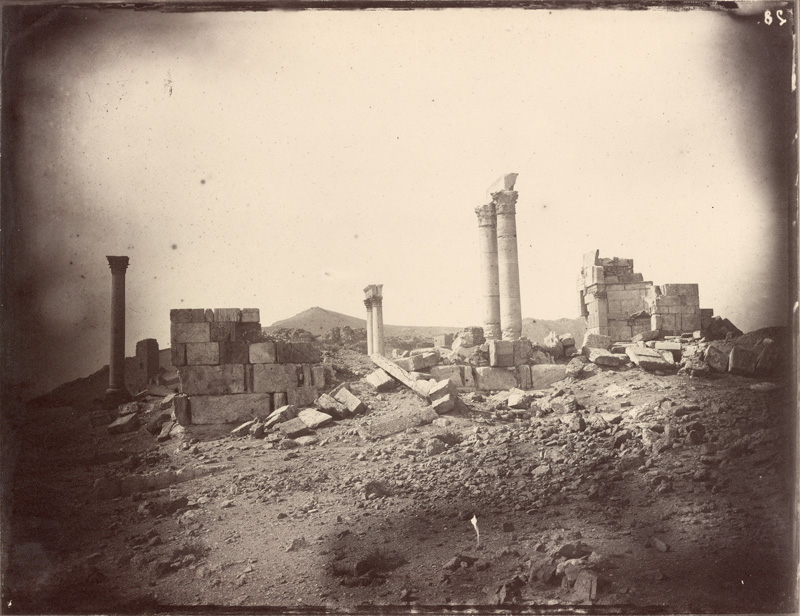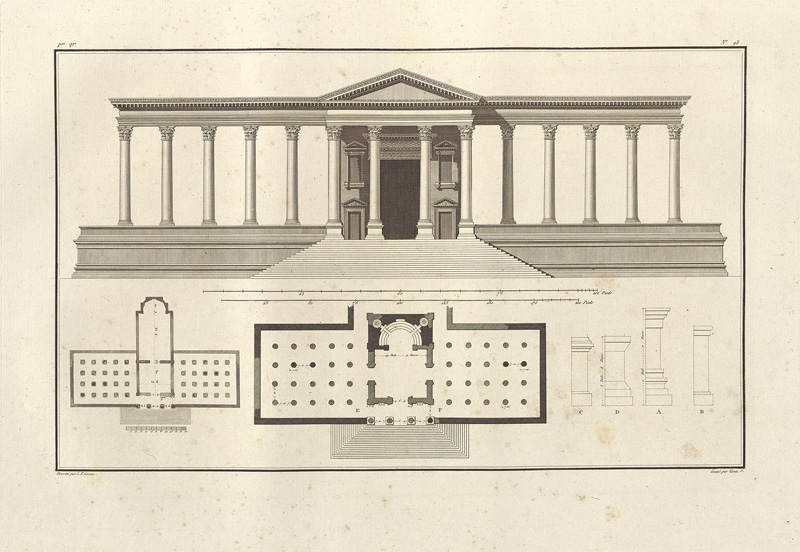Temple of the Standards
With the defeat of Queen Zenobia's army and the hostile takeover of Palmyra by the Romans in 272–73 CE, the western section of the city, subsequently referred to as the Camp of Diocletian, was renovated to accommodate a permanent Roman military presence. Housing the insignias of the victorious legions, the Temple of the Standards was the focal point of this new architectural enclave. Symbolizing Roman dominance, the "camp" was constructed on top of and with materials from earlier structures, possibly razed to underscore imperial control of the city. This massive space, culminating in the Temple of the Standards, opened off the transverse colonnade with a series of processional areas articulating the Roman complex.
Given how little survived above ground in the Camp of Diocletian, as seen in Vignes's photograph, it is impressive how Cassas's reconstruction brilliantly displays the great gateway's imposing character. Through study, excavation, and modern technology, archaeologists have come to envision a similar facade to that of Cassas, although revising many details. Comparison of Cassas's etchings and Vignes's photographs demonstrates the importance of having multiple sources to better examine the complicated and often scarce evidence remaining from antiquity.









